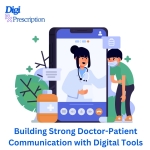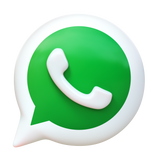
Building Strong Doctor-Patient Communication with Digital Tools
Effective communication is the foundation of trust and success in healthcare. With the integration of digital tools, doctors can now foster stronger relationships with patients, ensure clarity, and enhance overall care delivery. Let’s explore how digital tools are transforming doctor-patient communication.
1. Instant and Direct Communication Channels
Digital tools enable real-time communication between doctors and patients, ensuring concerns are addressed promptly.
- How It Helps:
- Secure Messaging Platforms: Patients can send queries and receive advice without needing in-person visits.
- Telemedicine Apps: Real-time video consultations bring doctors and patients face-to-face, even remotely.
2. Streamlining Appointment Management
Efficient appointment systems make interactions smooth and hassle-free for both doctors and patients.
- How It Helps:
- Online Booking Systems: Patients can schedule appointments at their convenience, reducing the chance of miscommunication.
- Automated Reminders: Alerts for upcoming appointments reduce no-shows and help patients stay informed.
3. Providing Access to Medical Records
Digital tools empower patients by granting them easy access to their medical history and treatment plans.
- How It Helps:
- Patient Portals: Secure platforms allow patients to review prescriptions, test results, and visit summaries.
- Shared Information: Transparency ensures patients are better informed about their health conditions and treatments.
4. Enhancing Clarity Through Digital Prescriptions
Digital prescriptions eliminate errors and enhance understanding of treatment plans.
- How It Helps:
- Clear Instructions: Digitally written prescriptions are legible and often include detailed usage guidelines.
- Automated Reminders: Tools notify patients about medication schedules and refill needs.
5. Enabling Continuous Monitoring and Feedback
Technology allows doctors to stay updated on their patients’ progress even between visits.
- How It Helps:
- Wearables and Apps: Patients can share real-time data, such as blood pressure or glucose levels, with their doctors.
- Follow-Up Communication: Doctors can provide ongoing advice or adjust treatment plans based on shared data.
6. Supporting Multilingual and Accessible Communication
Digital tools break down language barriers and make healthcare more inclusive.
- How It Helps:
- Translation Features: Apps can translate medical instructions into the patient’s preferred language.
- Accessibility Options: Tools with visual aids and voice support cater to diverse patient needs.
7. Educating Patients with Tailored Resources
Digital platforms offer personalized educational content to keep patients informed and engaged.
- How It Helps:
- Health Portals and Blogs: Patients can access articles, videos, and FAQs about their conditions.
- Interactive Features: Quizzes, surveys, and webinars make learning about health interactive and engaging.
8. Building Trust Through Secure Communication
Patients are more likely to communicate openly when they feel their information is safe.
- How It Helps:
- Encrypted Platforms: Ensure confidentiality and compliance with healthcare regulations.
- Trustworthy Systems: Patients feel confident sharing sensitive health details in a secure digital environment.
Conclusion
Digital tools are revolutionizing the way doctors and patients interact, fostering transparency, trust, and efficiency. By integrating these tools into daily practice, healthcare providers can build stronger, more meaningful relationships with their patients while delivering higher-quality care.
